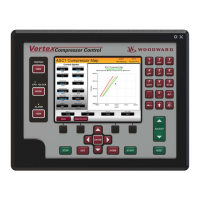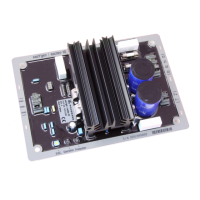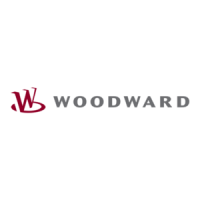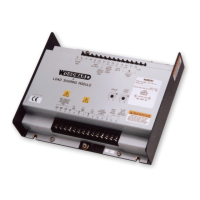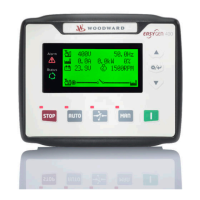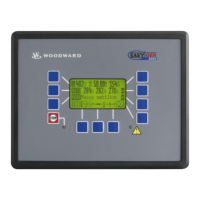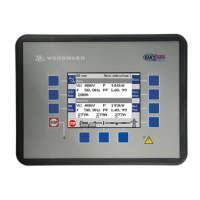Manual 37128A GCP-20 Series - Genset Control
Page 86/190 © Woodward
Parameter 70
Power controller
Gain Kp 00.0
P controller: gain factor 0.1 to 99.9
The gain factor K
p
influences the operating time of the relays. By increasing the
gain, the response is increased to permit larger corrections to the variable to be con-
trolled. The farther out of tolerance the process is the larger the response action is
to return the process to the tolerance band. If the gain is configured too high, the
result is excessive overshoot/undershoot of the desired value.
Parameter 71
P-contr. dead
band ratio *0.0
P controller: reduce sensitivity 1.0 to 9.9
If no adjusting pulses have been output for at least 5 seconds after the last adjust-
ment of the controller, the dead band is expanded by this factor.
For example
: In the case of an dead band of 2.5 % and a factor of 2.0 the dead band is increased after 5 s
to 5.0 %. If the control deviation subsequently exceeds 5.0 %, again, the controller's original sensitivity
is automatically reset (2.5 %). This input can be used, in the event of small control deviations, to avoid
unnecessarily frequent actuation processes, thereby protecting the voltage regulator.
Analog controller (Option Qf)
Parameter 72
Power controller
Gain Kpr 000
Option Qf only
P controller: P gain 1 to 240
The proportional coefficient specifies the gain. By increasing the gain, the response
is increased to permit larger corrections to the variable to be controlled. The farther
out of tolerance the process is the larger the response action is to return the process
to the tolerance band. If the gain is configured too high, the result is excessive
overshoot/undershoot of the desired value.
Parameter 73
Power controller
Reset time 00.0s
Option Qf only
P controller: reset time 0.0 to 60.0 s
The reset time T
n
identifies the I portion of the PID loop. The reset time corrects for
any offset (between set point and process variable) automatically over time by
shifting the proportioning band. Reset automatically changes the output require-
ments until the process variable and the set point are the same. This parameter per-
mits the user to adjust how quickly the reset attempts to correct for any offset. The
reset time constant must be greater than the derivative time constant. If the reset
time constant is too small, the engine will continually oscillate. If the reset time
constant is too large, the engine will take to long to settle at a steady state.
Parameter 74
Power controller
Deriv.time 0.00s
Option Qf only
P controller: derivative-action time 0.00 to 6.00 s
The derivative action time T
V
identifies the D part of the PID controller. By in-
creasing this parameter, the stability of the system is increased. The controller will
attempt to slow down the action of the actuator in an attempt to prevent excessive
overshoot or undershoot. Essentially this is the brake for the process. This portion
of the PID loop operates anywhere within the range of the process unlike reset.
Partial Load Lead
Parameter 75
Warm up load
setpoint 000%
P controller: part-load lead limit 5 to 110 %
If the engine requires a warm-up period, a lower fixed load value power may be en-
tered for the engine warm-up period. The setting for the generator load that is to be
utilized during this warm-up phase is made with this parameter. The fixed load is a
percentage of the generator rated power (
Parameter 17).
Parameter 76
Warm up load
time 000s
P controller: part-load lead time 0 to 600 s
The length of the warm-up period with part-load following the initial closure of the
GCB in mains parallel operation is configured here. If an engine warm-up period is
not desired, this parameter must be set to zero.
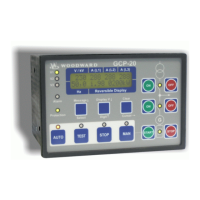
